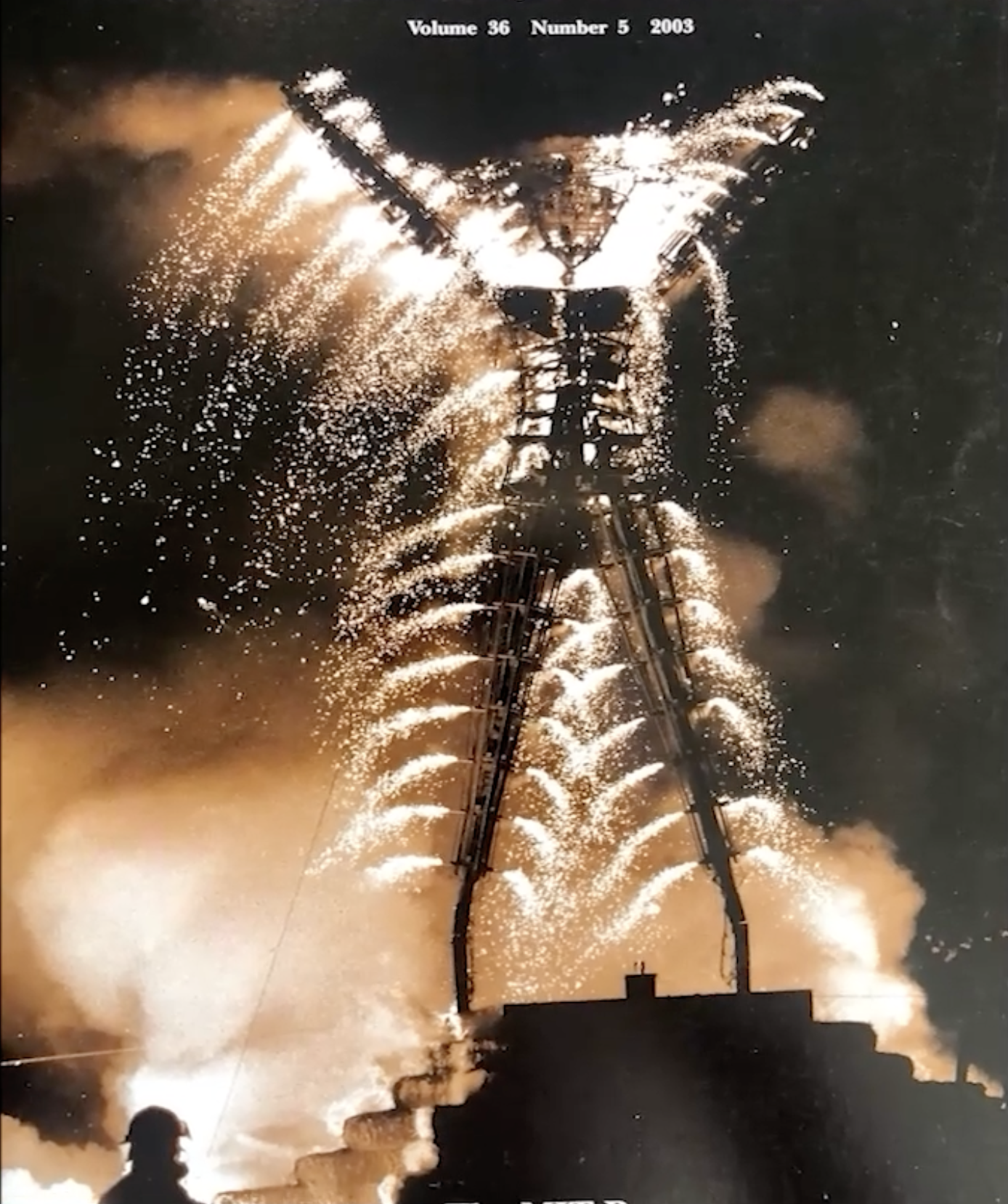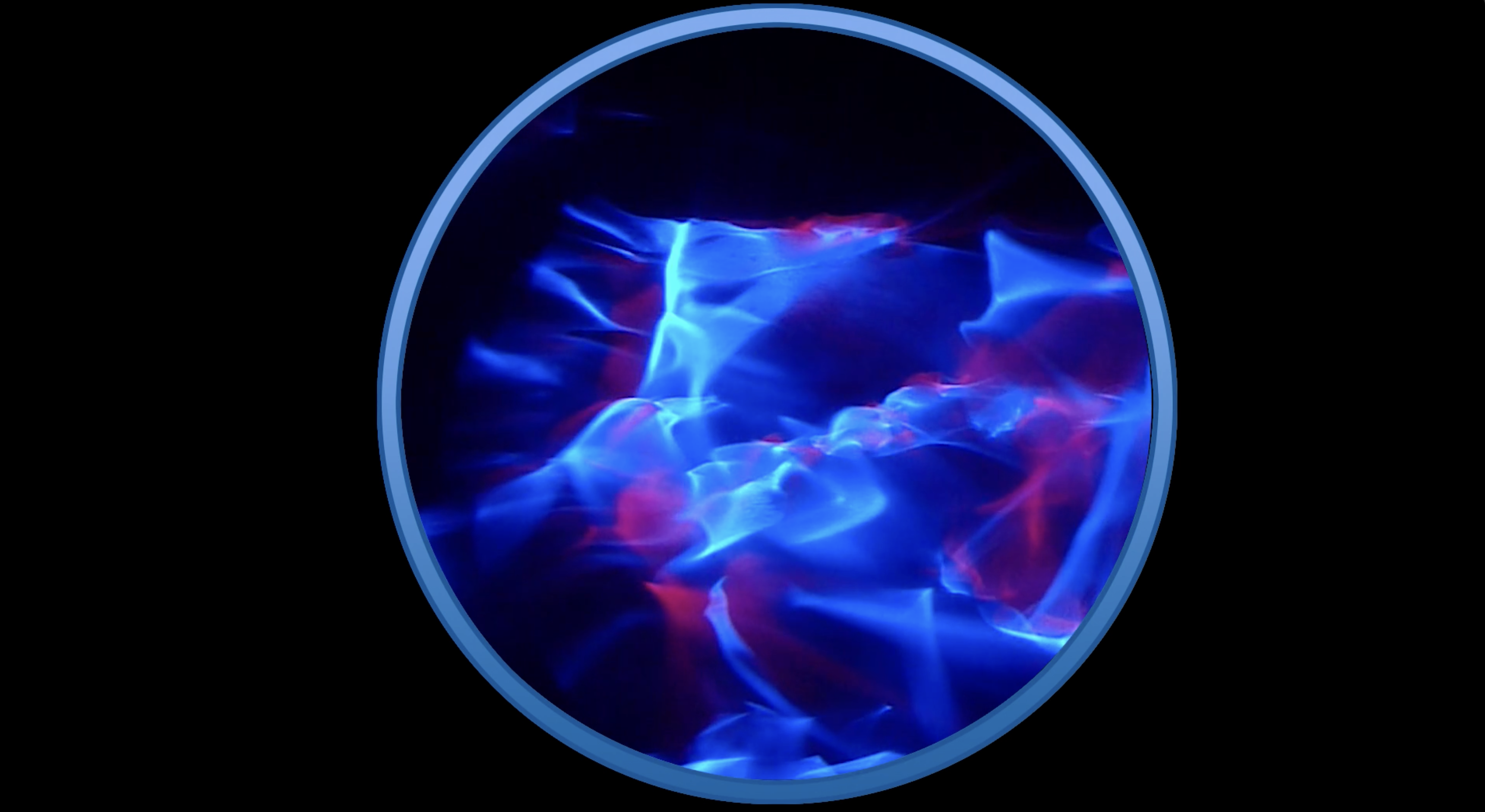Louis Brill
Louis M. Brill was a multifaceted self-taught media artist and prolific writer who made significant contributions to various forms of media and art – in particular, holography, and the art of light. Brill created Lumia projections, which he described as slow, undulating movements of light forms that shift from one image to another. He often paired these visual projections with music to create a more immersive experience. As a writer, he contributed over 50 articles to Signs of the Times magazine between 1992 and 2017, documenting spectacular signage in cities like New York and Las Vegas. Drawn to experimental and interactive light forms, Brill was also recognized as one of the 80 Burning Man founders who helped bring the festival to its current location in the Black Rock Desert of Nevada.
In his own words, Brill stated: "Lighting and visual effects have always fascinated me as a window to a fantastical vista of destinations, landscapes and abstract places whose spaces begged to be visited. My own efforts in this realm began in the 1970s as a student-practitioner of New York City's high-tech ghetto of that era embracing the emerging visual effect art mediums of the day. As a self-taught student of multi-media artist, I zigzagged between video tech, multi-image, photography, kinetic art and fine art holography."
Brill developed a distinctive approach to Lumia using light as his primary medium of expression. He manipulated light to create textured, smoke-like visuals that he described as "very evocative" and capable of presenting a "narrative visual presence". Brill's Lumia compositions often evoked mysterious, fantastical landscapes and abstract forms. Through controlled artistry and imaginative Interpretation, Brill emphasized the ability to control and manipulate Lumia through "directed artistic intentions," highlighting the deliberate nature of his creations. His artistic philosophy is reflected in another statement he made about Lumia projections: "Often to extend the visual presence of animated Lumia a musical track accompanies the Lumia motion which is no different than adding a musical score to a film. When music is played with a Lumia composition, it adds a narrative, emotional and dynamic presence to the abstract moving light as the mind attempts to synchronize the sound and visuals being presented".
Brill's work challenged viewers' perceptions, often defying immediate understanding and stretching the imagination. Brill likened the experience to a "Rorschach moment," where the viewer's worldview became integral to appreciating the Lumia lightscape. His Lumia creations are portals to other worldly realms, inviting us into "visual gateways to another dimension" filled with "illuminated photonic hill and dale".
In his own words, Brill stated: "Lighting and visual effects have always fascinated me as a window to a fantastical vista of destinations, landscapes and abstract places whose spaces begged to be visited. My own efforts in this realm began in the 1970s as a student-practitioner of New York City's high-tech ghetto of that era embracing the emerging visual effect art mediums of the day. As a self-taught student of multi-media artist, I zigzagged between video tech, multi-image, photography, kinetic art and fine art holography."
Brill developed a distinctive approach to Lumia using light as his primary medium of expression. He manipulated light to create textured, smoke-like visuals that he described as "very evocative" and capable of presenting a "narrative visual presence". Brill's Lumia compositions often evoked mysterious, fantastical landscapes and abstract forms. Through controlled artistry and imaginative Interpretation, Brill emphasized the ability to control and manipulate Lumia through "directed artistic intentions," highlighting the deliberate nature of his creations. His artistic philosophy is reflected in another statement he made about Lumia projections: "Often to extend the visual presence of animated Lumia a musical track accompanies the Lumia motion which is no different than adding a musical score to a film. When music is played with a Lumia composition, it adds a narrative, emotional and dynamic presence to the abstract moving light as the mind attempts to synchronize the sound and visuals being presented".
Brill's work challenged viewers' perceptions, often defying immediate understanding and stretching the imagination. Brill likened the experience to a "Rorschach moment," where the viewer's worldview became integral to appreciating the Lumia lightscape. His Lumia creations are portals to other worldly realms, inviting us into "visual gateways to another dimension" filled with "illuminated photonic hill and dale".

Burning Man

Crazy Ray LUMIA
vortex
vortex